Business Capability Modelling and Strategic Investment Planning An Approach to Improving Capability Maturity
Introduction
IP Australia is a medium-sized, Australian Federal Government agency which administers the patent, trade mark, design, and plant breeder's rights systems in that country. The organisation was established in 1904 and has a long history of IP right processing. Currently, there are approximately 1,100 staff, around half of which are highly-qualified examiners whose jobs mainly involve the assessment of IP application validity. In the last 40 years, the organisation has become increasingly ICT-dependent, and business improvement and ICT investment have become a major factor in its strategic planning.
A good way of understanding IP Australia is to look at its value propositions.
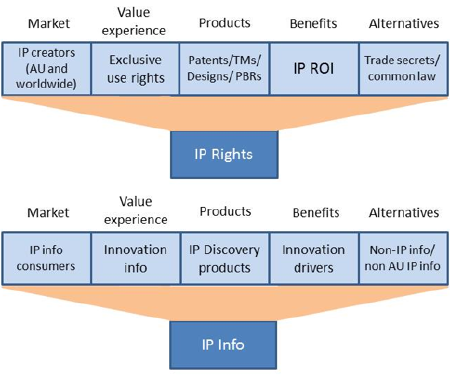
Figure 1. IP Australia's Value Propositions.
IP rights provide owners with exclusive use rights, assisting them to obtain a return on their R&D and goodwill. IP information helps stimulate innovation through making IP publically available, so that innovation can drive further innovation.
IP Australia Corporate Strategy and the Role of Enterprise Architecture
IP Australia has an Enterprise Architecture capability that has been established for five years. The following domains are specifically represented:
- Business
- Information
- Enterprise Solution
- Technology
- Security
One of the key objectives of Enterprise Architecture is to ensure alignment of the business reality with the organisation's corporate strategy. To this end, IP Australia has adopted a fairly standard strategic management framework.
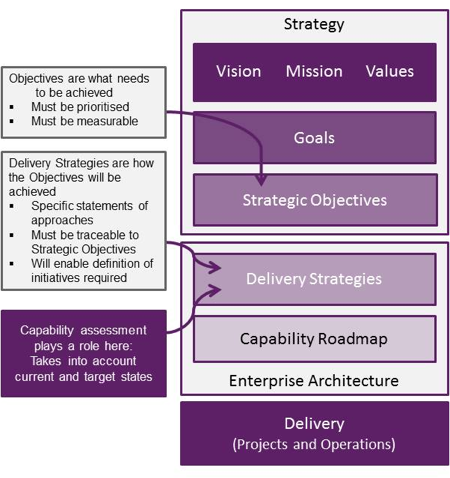
Figure 2. IP Australia's Strategic Management Framework.
The Vision, Mission, and Values are the highest-level strategic statements, defining the organisation's reason for being and where it wants to get to. These are underpinned by Goals, which are more specific statements but are still quite aspirational and not necessarily time-bounded and measurable. Objectives map to the Goals, and these follow the SMART method.[1] As such they are measurable and time-bounded. Measurement takes the familiar key performance indicator (KPI) approach[2] and this is critical to determining whether or not the objectives are being achieved. The time window corresponds to a five-year planning cycle, so Objectives are framed to be achievable within this window. It is essential that the Objectives are prioritised, recognising the fact that they will not all be achievable at the same time.
Enterprise Architecture's role in this strategic management framework is primarily in the realm of the Delivery Strategies and the Capability Roadmap. The Delivery Strategies represent how the Strategic Objectives will be achieved. These specific statements are a critical component towards strategy realisation. The Capability Roadmap is the vehicle whereby the Delivery Strategies are organised; this will be discussed at length later in this document.
IP Australia's Business Capability Model
A major component of IP Australia's Enterprise Architecture has been the development of the organisation's Business Capability Model. While detractors have argued that capability models are ICT-centric artefacts developed by technically-focussed enterprise architects, IP Australia's model is a strategic tool that provides a holistic representation of the business. As such, we have found it to be an invaluable tool for strategic planning.

Business capabilities may be defined simply as what the organisation needs to achieve its strategic objectives. In the illustration above, what capabilities does the climber need to scale the Matterhorn? Obviously, a mountain climbing capability with the attributes of climbing skill, fitness, endurance, and experience, along with all of the equipment required. In addition, other enabling capabilities are needed to successfully conquer the mountain: planning, logistics, and navigation capabilities at the very least.
IP Australia's business capability model appears in Figure 3.
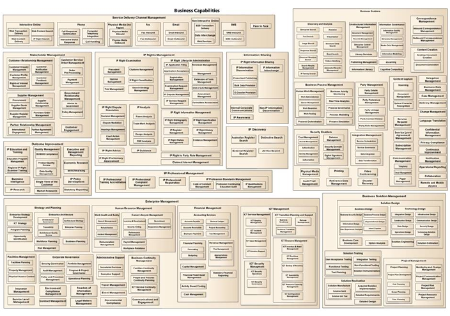
Figure 3. IP Australia's Business Capability Model.
The capabilities are contained in a hierarchical model, with Level 1 representing a summary view of the business. IP Australia's Level 1 capabilities comprise:
- IP Rights Management — this is where most of the organisation's efforts are made. The capability focusses on IP application validity determination and administering the IP right lifecycles.
- IP Discovery — enables examiners and external stakeholders to conduct searches of the IP databases and discover IP information (information pull capabilities).
- Information Sharing — the publishing of IP information and also the issuing of notifications (information push capabilities).
- Service Delivery Channel Management — how services are delivered to customers. The electronic channels are preferred.
- Stakeholder Management — focussing on IP Australia's customers but also includes suppliers and government and overseas business partners.
- Outcome Improvement — management of quality, business intelligence, and other business improvement capabilities.
- Enterprise Management — back office support functions. These are needed by most, if not all, government and corporate organisations.
- Business Solution Management — the heavy reliance on ICT solutions makes this an important capability for IP Australia.
- Business Enablers — these are capabilities used by other capabilities. A good example is Document Generation. Whenever a document needs to be generated anywhere in the organisation, this capability is brought into play.
The lower layers of the hierarchy drill down into more detail. These lower layers define a very useful analytical view of the organisation and are most useful for planning purposes. An example of this hierarchical arrangement is:
IP Rights Management > IP Right Examination > Opinion Management
In managing IP Rights throughout their lifecycle, IP right applications are examined to determine whether or not they are valid. In conducting an examination, examiners form an opinion and rely on the Opinion Management capability for this purpose.
Business Capabilities and Business Processes
There is some debate about the relative virtues of capability approaches versus process approaches.[3] We do not like to think of these approaches as competing or being somehow mutually exclusive. Business processes exist to deliver value to the customer. Business capabilities exist to support business processes. We have found that a business capability approach offers a powerful insight into the organisation that is invaluable for strategic planning, as well as for other purposes. Capabilities are useful for mapping information and technology assets and thus provide a direct link to the organisational reality. If used properly these views provide numerous benefits.
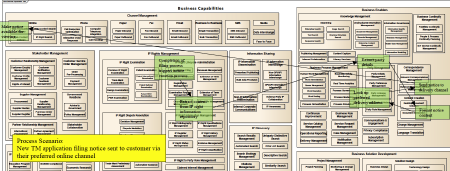
Figure 4. Process Overlaid on the Capabilities.
However, the process view is equally valuable and intrinsic to how value is provided to the customer. Thus, it is necessary to maintain both views of the organisation. In fact, a valuable view is a process overlaid on the capabilities, as illustrated in Figure 4. In this way we can see which capabilities are relied upon while executing a particular process. This offers a powerful planning perspective.
Assessing the Maturity of Business Capabilities
Now, what if the capabilities are not up to spec? While some capability may be better than none, if it is below par for the strategic requirement then the objective will not be achieved or, at best, partial achievement will be the result.
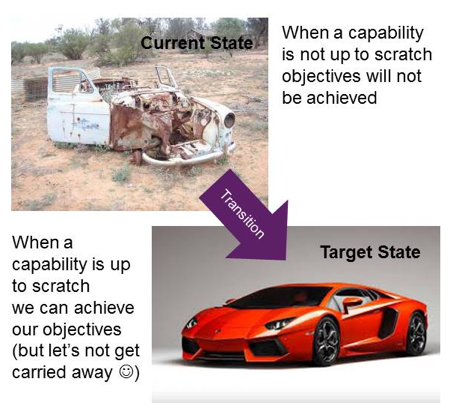
We have found the adoption of a capability maturity approach to be valuable in assessing whether IP Australia's capabilities are at the right level to achieve objectives. At the time of developing this approach, a literature scan did not reveal any suitable maturity models and so we developed our own.
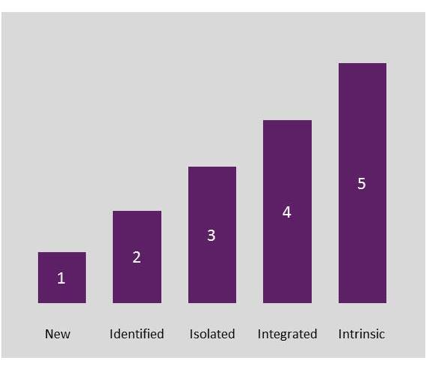
Figure 5. The Maturity Model
The maturity model adopts a familiar 5-level approach, with Level 1: New meaning that no capability yet exists (but a need for the capability has been identified, e.g., to expand the business through provisioning a new customer service), through to Level 5: Intrinsic, where the capability may be considered "best of breed." For each level, we have developed descriptions of the maturity aspects for five capability dimensions.
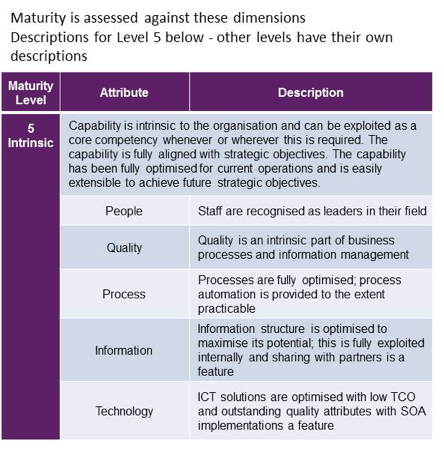
Figure 6. Attributes & Descriptions for Maturity Level 5.
The attributes in Figure 6 are for the Level 5: Intrinsic maturity level. These are defined in terms of five dimensions:
- People — what calibre of person do we need to achieve our objectives?
- Quality — what levels of quality do our customers expect in relation to this capability?
- Process — how efficient and effective does the processing associated with the capability need to be?
- Information — how sophisticated does the information relating to this capability need to be (e.g., high levels of structure)?
- Technology — what level of technology support is required by the capability to achieve objectives?
Capability Maturity Assessment in the Strategic Investment Planning Process
IP Australia leverages the capability maturity approach when planning its strategic investments. The process shown in Figure 7 is used.
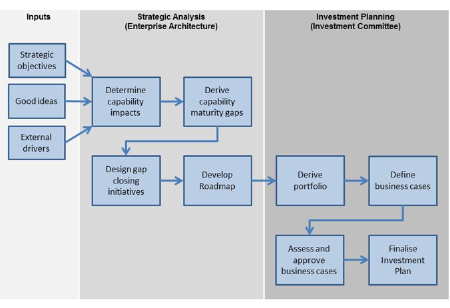
Figure 7. The Strategic Investment Planning Process.

There are three major feeds into the process: strategic objectives, "good ideas," and external drivers (e.g., new government requirements). We will concentrate on the strategic objective feed as this has been the focus of the current discussion. The first step involves assessing which capabilities are impacted by an objective and in what way. Developing a target state maturity level for each capability in light of the objective allows comparison with the current maturity level. We have found the following to be a useful representation of this.
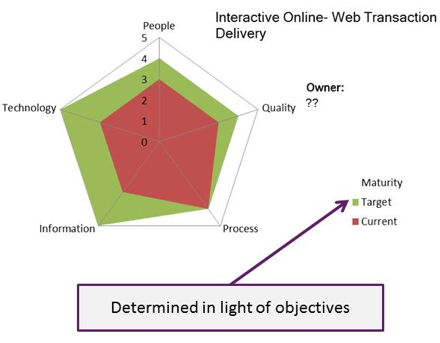
Once the gap has been determined, strategies to fill this gap are defined. This corresponds to the Implementation Strategy part of IP Australia's strategic framework. The strategies will correspond to initiatives. These are sequenced and collected on a strategic planning document known as the Capability Roadmap.
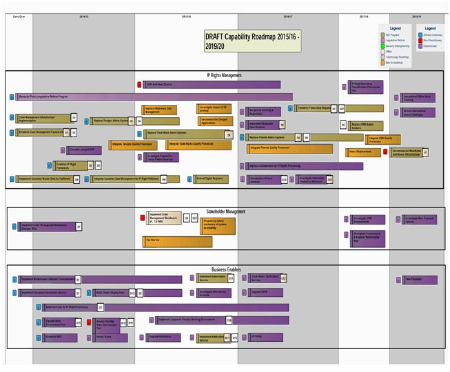
Figure 8. The Capability Roadmap.
The sequencing of the Capability Roadmap is determined by:
- the relative priorities of the objectives that the initiatives aim to achieve, remembering that these objectives were prioritised when the corporate strategy was developed.
- any dependencies between initiatives. Some initiatives may be prerequisites for others and so these will need to run first. It is important that all stakeholders understand the importance of these prerequisites.
The Capability Roadmap is a very high level planning view. The sequencing is done at the financial year level; there is no point trying to determine a finer timing at this stage. Also, the Roadmap does not pre-empt how the initiatives will be run or how they will be funded. It only states what needs to be run and in what relative order.
In conducting the capability maturity assessment and developing the Capability Roadmap, Enterprise Architecture relies heavily on the Enterprise Architecture Board. This is an advisory body that comprises representation from across the business. The representatives are advocates for the interests of their business units, and thus they must have a sound understanding of their business, particularly at the strategic level. With the assistance of these representatives, Enterprise Architecture is able to put forward a sound strategic planning view to the organisation's decision-makers. In IP Australia, the only way that an initiative can be funded through normal channels is via this planning process.
Running the Initiatives and Monitoring
With the Capability Roadmap developed, this is handed over to the Investment Planning phase. From the Roadmap a portfolio of projects is developed, with business cases fully defined and more detailed planning undertaken. As the Capability Roadmap is a higher-level document and has not taken a fine-grained view of competition for scarce resources, not all initiatives proposed by the Roadmap will be funded at this point in time. The portfolio is fine-tuned during the Investment Planning phase until a final set is agreed upon. The iterative nature of this process results in updates to the Capability Roadmap, with unfunded initiatives being pushed back and the Roadmap being adjusted in readiness for later planning cycles.
Once the Roadmap initiatives have progressed to being run as funded projects or as business-as-usual tasks, it is necessary to track their progress.
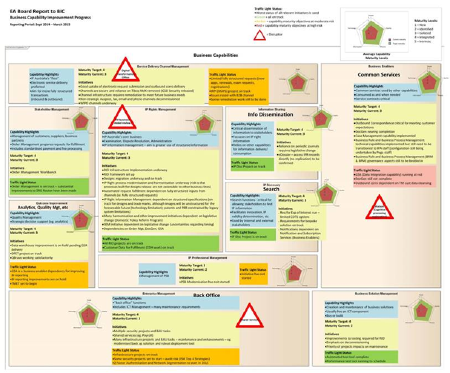
Figure 9. Tracking and Reporting Progress.
Figure 9 illustrates a regular report that Enterprise Architecture prepares for the Investment Committee. This not only tracks progress towards initiative delivery but also monitors how well objectives are being achieved. The measures defined when the objectives were agreed upon are used to this end. Just because an initiative has been completed does not necessarily mean that the capability maturity gap has been closed and the objective has been achieved. The initiative may not have been sufficient to accomplish this or it may not have delivered results as planned. So, the ongoing performance appraisal, reporting, and feeding these outcomes back into the planning process is required.
Another point to note from the diagram is the red triangles. These represent "disruptors." Disruptors are unforeseen factors that have been identified during the reporting period that are likely to have an impact on planning and decision-making. They will originate from outside the organisation and may take the form of emergent Whole of Government compliance requirements, for example. They may also represent opportunities, for example, those associated with an emerging form of technology. The business needs to take these into account to ensure it responds to environmental factors and takes advantage of opportunities.
Conclusion
This paper has discussed the merits of adopting a business capability approach to Enterprise Architecture and strategic planning. This hinges on a detailed maturity assessment of business capabilities, determining target maturity levels in light of the organisation's strategic objectives, and comparing these with the current levels. Initiatives can be designed to close these gaps and placed on the Capability Roadmap. This vehicle is then used to drive the strategic investment decision-making for the organisation. As investments are made and initiatives are run, the outcomes of these are monitored to determine whether maturity gaps are being closed and strategic objectives are being achieved.
References[1] See e.g., http://www.techrepublic.com/article/use-smart-goals-to-launch-management-by-objectives-plan/ ![]()
[2] See e.g., http://web.archive.org/web/20140620093448/http://2gc.eu/files/2GC-FAQ1-What_is_a_Balanced_Scorecard_140616.pdf ![]()
[3] See e.g., http://architectingvalue.com/2011/06/27/the-battle-of-our-times-capabilities-vs-process/ ![]()
# # #
About our Contributor(s):
Online Interactive Training Series
In response to a great many requests, Business Rule Solutions now offers at-a-distance learning options. No travel, no backlogs, no hassles. Same great instructors, but with schedules, content and pricing designed to meet the special needs of busy professionals.













